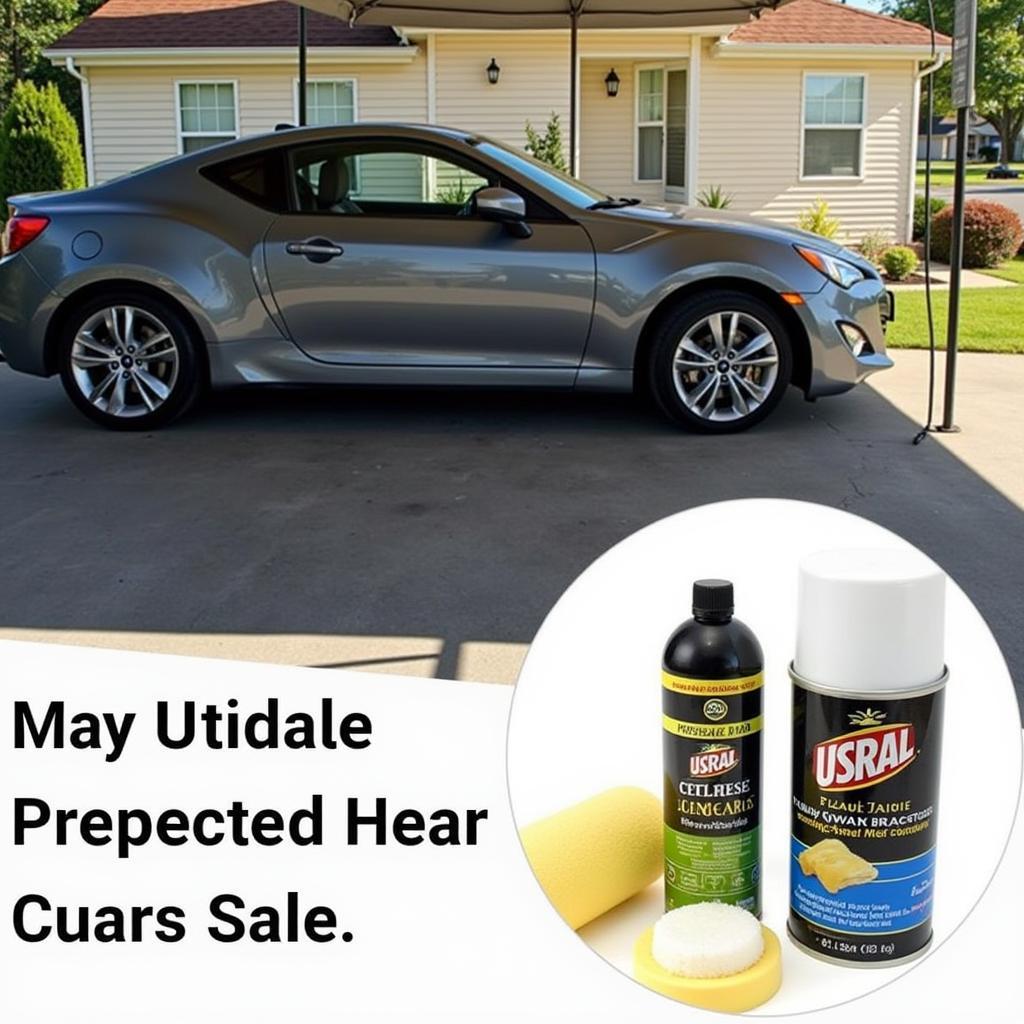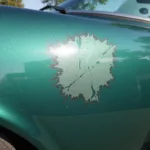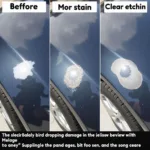Car paint bubble repair is a common issue for car owners. These unsightly bubbles, often appearing as small blisters or raised areas, can detract from your car’s appearance and, if left untreated, lead to more serious paint damage. Understanding the causes, prevention, and repair options for car paint bubbles is crucial for maintaining your vehicle’s finish. Let’s delve into everything you need to know about this frustrating problem. You can learn how to repair bubble up paint on a car.
Understanding the Causes of Car Paint Bubbles
Several factors can contribute to the formation of bubbles under your car’s paint. One of the most common culprits is moisture. When moisture gets trapped between the paint layers, it can cause the paint to lift and bubble. This can happen due to improper paint application, where moisture is sealed in during the painting process. Another common cause is exposure to excessive sunlight and UV rays, particularly in hot and humid climates. This can cause the paint to degrade and blister. Impact damage, such as stone chips or minor collisions, can also create entry points for moisture, eventually leading to bubbling. Finally, rust forming beneath the paint can push the paint outwards, creating bubbles.
Preventing Car Paint Bubbles
Prevention is always better than cure, and there are several steps you can take to minimize the risk of car paint bubbles. Regularly washing and waxing your car can protect the paint from the elements and prevent moisture from penetrating. Addressing any chips or scratches promptly can also prevent moisture from seeping in. Parking your car in a shaded area whenever possible can minimize sun damage, while applying a high-quality paint sealant can offer an extra layer of protection. Learn more about preventing micro blisters with our guide on how to repair micro paint blisters on car.
 Preventing Car Paint Bubbles by Parking in Shade and Regular Waxing
Preventing Car Paint Bubbles by Parking in Shade and Regular Waxing
DIY Car Paint Bubble Repair
For minor bubbling, you might be able to tackle the repair yourself. This typically involves sanding down the affected area, priming, and repainting. However, it’s crucial to assess the extent of the damage. If the bubbling is extensive or caused by rust, it’s best to consult a professional.
Steps for Minor Car Paint Bubble Repair:
- Clean the affected area thoroughly with soap and water.
- Sand the bubbled area down to bare metal using fine-grit sandpaper.
- Apply a rust inhibitor if necessary.
- Apply primer to the sanded area.
- Once the primer dries, apply several thin coats of matching paint, allowing each coat to dry completely.
- Finish with a clear coat for added protection.
Professional Car Paint Bubble Repair
For more serious cases, professional car paint bubble repair is recommended. A professional can accurately assess the damage and determine the best course of action. They have the expertise and tools to address underlying issues like rust and ensure a seamless, long-lasting repair. For example, if bird droppings have etched into the paint, you might need specific repair strategies. Consider checking our guide on bat poo on car paint repair for relevant tips.
When to Seek Professional Help
Knowing when to seek professional help is essential. If the bubbling is widespread, recurring, or accompanied by rust, it’s time to call in the experts. Attempting a DIY repair in these cases can often worsen the problem. Professionals can also address issues like repair bubbling paint on car effectively.
“Addressing paint bubbles early can save you time and money in the long run,” says John Smith, Automotive Paint Specialist at Smith Auto Body. “Ignoring the issue can lead to more extensive damage and costly repairs down the line.”
“Proper surface preparation is key to a successful car paint bubble repair,” adds Jane Doe, Lead Technician at Doe’s Auto Repair. “This ensures proper adhesion of the new paint and prevents the issue from recurring.” If you’re looking for quick fixes, explore options like car paint repair stickers.
Conclusion
Car paint bubble repair can be a simple DIY fix or a more complex professional job, depending on the severity. Understanding the causes and taking preventative measures can help protect your car’s finish and avoid costly repairs. By addressing car paint bubble repair promptly, you can keep your car looking its best for years to come.
FAQ
- What causes car paint bubbles? Moisture, sun damage, impact damage, and rust.
- Can I repair car paint bubbles myself? Minor bubbling can be addressed with a DIY approach, but extensive damage requires professional repair.
- How can I prevent car paint bubbles? Regular washing, waxing, prompt scratch repair, and parking in shade can help.
- When should I contact a professional for car paint bubble repair? For widespread bubbling, recurring issues, or rust-related bubbling.
- What are the long-term effects of ignoring car paint bubbles? More extensive paint damage, rust, and costly repairs.
- What tools do I need for DIY car paint bubble repair? Sandpaper, rust inhibitor, primer, paint, clear coat, and applicator tools.
- How much does professional car paint bubble repair cost? The cost varies depending on the extent of the damage and the shop’s rates.
Common Scenarios for Car Paint Bubble Repair Questions:
- Scenario 1: Small, isolated bubbles appear after a minor scratch.
- Scenario 2: Widespread bubbling appears on the hood after prolonged sun exposure.
- Scenario 3: Bubbles form around a rusted area of the car.
Further Resources:
For more detailed information on specific car paint issues, consider exploring our articles on related topics.
Need Help?
For immediate assistance and expert advice, please contact us via WhatsApp: +1(641)206-8880 or Email: [email protected]. Our 24/7 customer support team is ready to help you with any car repair needs.


